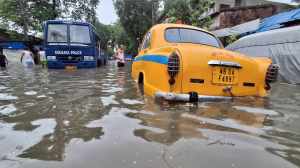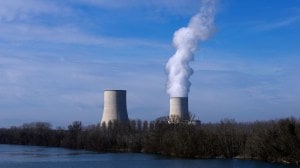Charges fly thick and fast in A-I, Indian blame game over mess
AIR India and Indian are flying through their worst losses and while the global aviation industry is blaming similar downturns...

AIR India and Indian are flying through their worst losses and while the global aviation industry is blaming similar downturns largely on record oil prices, India’s state-run carriers have more than just costly aviation turbine fuel (ATF) to rest their case on.
And not too unexpectedly, a blame-game of sorts is on between the employees, their unions, the management, bureaucrats and political masters involved in running the public sector firm, the National Aviation Company of India Ltd (NACIL), formed after the merger of the two airlines.
As reported by The Sunday Express, NACIL’s unaudited losses for 2007/08 have more than tripled to Rs 2,144 crore from Rs 688 crore a year ago. The company has borrowed Rs 8,550 crore as working capital and nearly exhausted its limit, according to a financial status paper drafted at the end of April. It faces a daily working capital deficit of Rs 8.2 crore and top officials say the airline could close if banks stop lending money.
The same paper also details reasons for the losses (see box). Beyond the dense numbers though, there is a litany of complaints from all sides, with allegations of mismanagement and graft flying thick and fast. The financial status paper vaguely touches on one of the aspects, calling it as “integration issues” related to the merger of Air India and Indian.
It says separate productivity linked incentives are being paid in both airlines and they need to be unified. Human resource issues relating to payroll, wages and allowances need to be harmonised. The procurement process of the two need to be combined and foreign postings integrated, it adds.
“The biggest culprit is mismanagement,” said a top NACIL official, who spoke to The Indian Express on condition of anonymity. “We have been mindlessly spending even though losses are mounting. For instance, a project report concludes that leasing three aircraft will make losses but the leasing is still approved.”
Another senior official blames feet-dragging by the management last year over tightening the company’s belt when the first signs of the turbulence ahead were visible. “All the steps that have been planned now should have been put in place when crude prices were around $70 or $80. Instead, we were made to wait for the new chairman to be appointed this year and by then things had nosedived,” he said.
The employee unions have their own take on the sad state of affairs. In a letter to Civil Aviation Minister Praful Patel earlier this month, the Joint Action Committee of unions, associations and guilds of Air India had blamed “reckless licensing” of new airlines by the ministry that had led to excess capacity in a market already suffering from overcapacity and undercutting. The merger of AI and IA was done in “undue haste” and the “unplanned integration” had contributed to massive losses, they said.
In his reply to the unions, Patel quoted a recent media interview he gave where he blamed the airline’s old and small fleet, difficulty in finding planes to lease and added that the people who work with Air India had to “get their act together” as “over the years, a lot of complacency has come in”.
In an apparent delicate balancing act aimed at unions angered by his now-famous “perform or perish” comments in the interview, Patel wrote, “There are equally more important instances both on management and employees’ side which could have led to the present situation. I hope that you will take up at least the employees’ related issues with your colleagues, while we in government speak to the management. However, let me reiterate that the airline is run by the management and the ministry is there only to support or offer any advice if sought.”
(Tomorrow: The way forward, a radical wishlist to stop NACIL’s plunge)
Clarification: The last chart in the Air India series in yesterday’s Sunday Express (Additional Working Capital Borrowings Required) erroneously included Jet Airways in the heading. The headings should read “Indian Airlines” for the first column, “Air India” for the second and “Total” for the last.
Reasons for losses in 2007/08
Total revenue decreased by Rs 571 crore or 3.5 per cent as:
•Passenger revenue fell by Rs 92 crore (0.9%) due to a 3.8 per cent decline in yield although number of passengers carried increased by 3.2 per cent
•Decline in charter lease and pool revenue by Rs 316 crore
•Decline in other revenue by Rs 259 crore
Expenses increased by Rs 453 crore or 3.0 per cent as:
•Fuel expenses increased by Rs 410 crore
•Staff expenses increased by 285 crore
Overall increase in net loss by Rs 1,456 crore due to:
•Increase in interest and financing charges by Rs 378 crore due to loans taken for aircraft acquisition and working capital
•Increase in depreciation/obsolescence by Rs 121 crore due to newly acquired aircraft
Photos


- 01
- 02
- 03
- 04
- 05





























